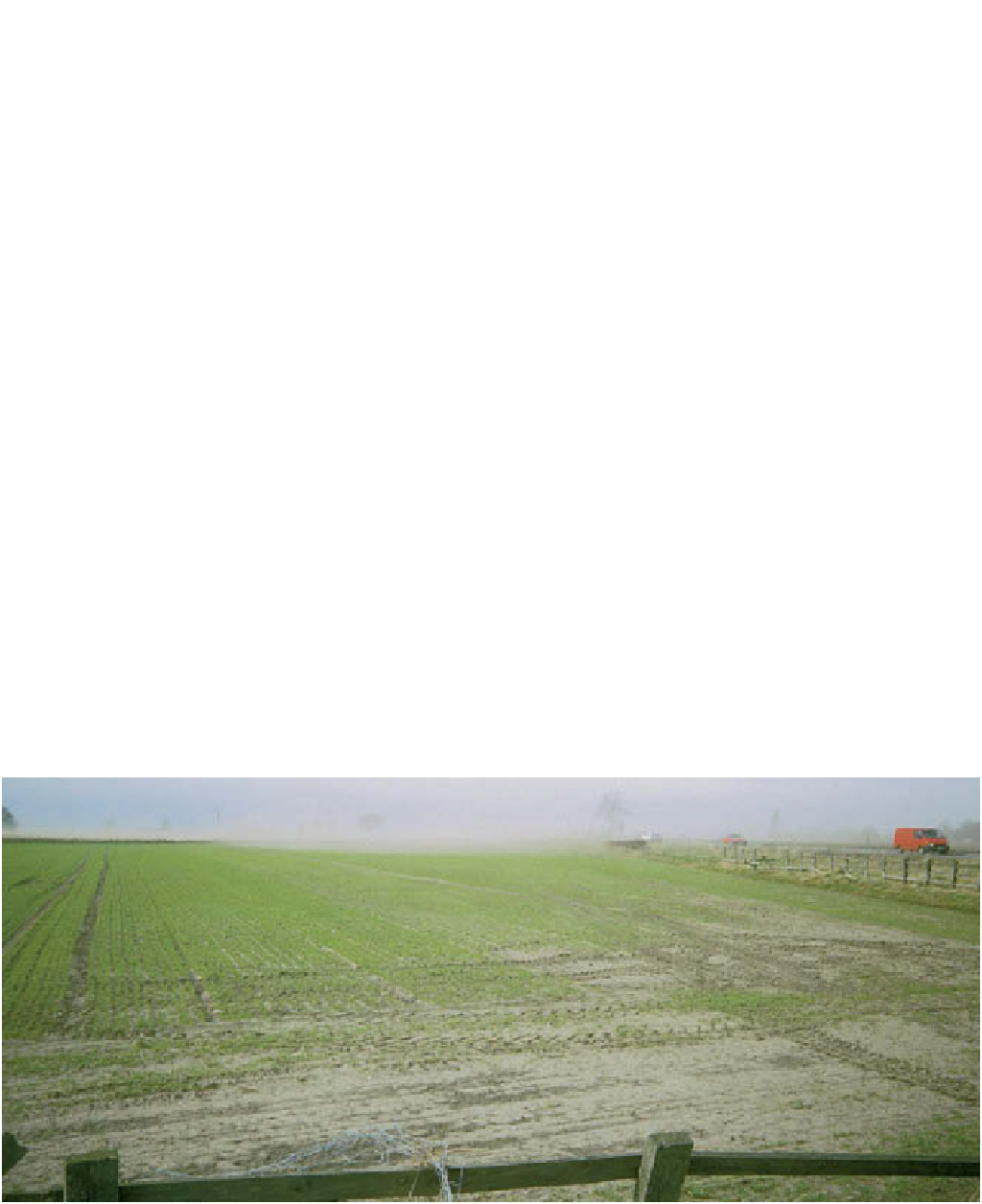Geoscience Reference
In-Depth Information
them elsewhere in the landscape or in the oceans. An
important distinction is between
natural
erosion and
accelerated
erosion; it will be clear that land used to grow
crops is drastically altered from its original state, especially
in terms of vegetation cover. Erosion rates are conse-
quently much greater on soils which are bare of cover for
long periods due to cultivation. Sometimes the wrong
assumption is made that all erosion is human-induced,
when it clearly is not. It has been estimated that about 70
per cent of the land area of Europe is not covered by arable
land or permanent crops. Of this, a third is forested, and
about 40 per cent is grazed in improved or unimproved
pasture. Much of the unimproved land will be subject to
low rates of erosion, although other parts are eroding
rapidly. Soil erosion and conservation have been at the
forefront of soil studies since the severe 'dust bowl' erosion
of the central and western United States and Canada in
the 1930s. A series of drier than normal years led to crop
failures on marginal land cultivated by techniques
appropriate to more humid regions. Unprotected topsoils
dried out, lost their structural stability and simply blew
away. At the same time, more humid parts of the south-
east United States reported severe water erosion caused by
poor land management through the monoculture of
cotton and maize, leading to the breakdown of soil
structures, lower infiltration rates, increased overland flow
and consequent erosion and flooding.
Removal of soil particles is by three agencies: rain
splash, running water or wind. Erosion by running water
can be of three types:
sheet erosion
or
inter-rill
erosion,
rill
erosion and
gully
erosion. Sheet erosion involves the even
removal of soil in thin layers over an entire area; it is the
least conspicuous and most insidious type of erosion. Rills
are small channels cut into fields by small streams, and
they are usually small enough to be removed by ploughing,
whereas gullies are much larger and need major earth-
moving to fill them in. The energy needed to detach and
move soil particles comes from the kinetic energy of the
rainfall or wind; this is termed the
erosivity
. The suscep-
tibility of the landscape to erosion is called the
erodibilty
,
and is influenced by vegetation, soil and slope factors.
Rates of soil erosion
In England and Wales, it is estimated, 40 per cent of the
arable farmland is at risk of soil erosion above a tolerance
level of one tonne per hectare, the rule-of-thumb level
which approximates to the rate at which new soil is
formed. Erosion occurs on arable land where the ground
is often bare or partly vegetated. The important control-
ling factors are soil texture, slope steepness, slope form,
field size and farming practices (Boardman and Evans
2006). Water erosion can be severe on sands, loamy sands,
loams and silts, which are widespread in southern and
eastern England. Wind erosion is a problem for the sands,
loamy sands, sandy loams and cultivated peat soils of
Lincolnshire, Yorkshire and East Anglia (
Plate 19.7
).
The
content of fine sand seems to be the crucial factor in
Plate 19.7
Fine tilths of sandy soils in the Vale of York in northern England are at risk of wind erosion by strong winds in spring
when the soil surface is relatively unprotected by a cover of crops.
Photo: Ken Atkinson










































